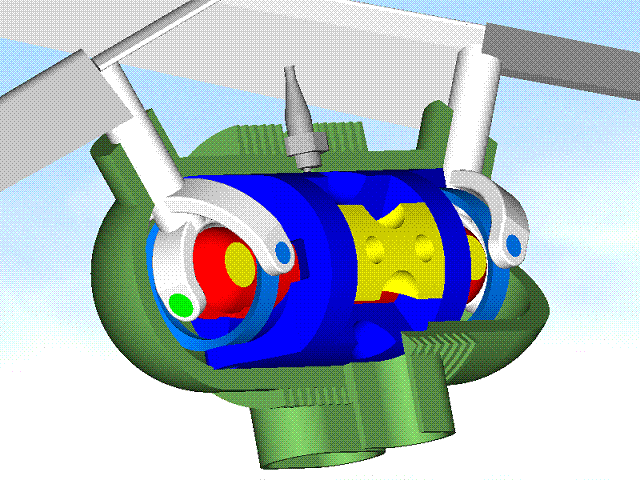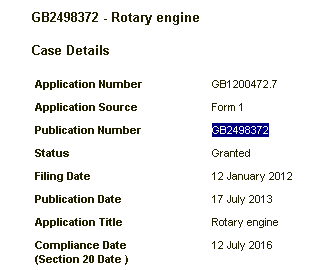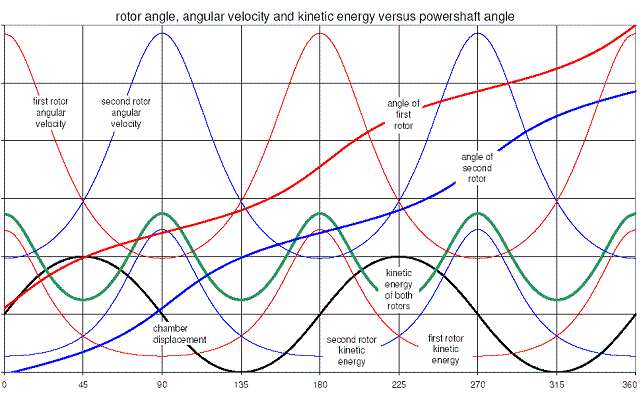Hello Kelpiecross.
You write:
“And even if the PatRE (or the engine in the video) can be made to work in a reliable fashion - what would be the advantages of CAM engine
over a conventional engine?”
The free breathing (freer than Wankel rotary – see the size of the ports as compared to the capacity of the combustion chambers).
The absence of free (unbalanced) inertia forces.
The light-weight and compactness.
The simplicity (no camshafts, no valves, no timing mechanism, not even a gearwheel in its structure) and the consequence reliability.
The built-in revs reduction and synchronization of the two counter-rotating propellers (see below).
Again: the lightweight and the compactness and the simlicity and the "direct" drive of the load (propellers) which are vital for a Flyer.
You also write:
“The CAM engine would have sealing problems, its piston speed (especially on the outside) would be very high. I don't see why it would have a notably better TE or power output than a conventional engine”
In the PatRE rotary engine the rotor-pistons are not thrusting on the casing.
Only the sealing rings (if any; in small sizes, like for model engines, the ring-less design is the case) thrust on the inner surface of the cylindrical casing.
Is their speed “very high” as you write?
Take a four-in-line four-stroke conventional engine (the PatRE is a four-stroke engine, too; and its has four independent chambers / "cylinders", too).
To complete a cycle of operation in each cylinder, it requires two crankshaft rotations and eight complete reciprocations of a “piston / piston rings” set. The inevitable trust between pistons and cylinder-liners causes significant friction loss.
In the PatRE, in one only rotation of the rotor-pistons it is completed a combustion per combustion chamber.
If you have the same capacity per combustion chamber with the 4-in-line 4-stroke mentioned above, and in order to make the same power, you need half rpm (which is also favorite for the propellers, too; the kinematic mechanism of the PatRE, which is completely rid of gearwheels, is a built-in revs reduction and a synchronization mechanism, too).
Alternatively, in order to take the same power at the same revs with the conventional reciprocating 4-stroke engine, the required capacity of the PatRE is half.
Please rethink about the “very high speed” issue.
You also write:
“The various arms etc. on the Hooke's joint appear to be a bit complex and flimsy to work reliably in this application.”
The two double Cardan (or Hooke) joints at the sides of the PatRE engine can be resized / reinforced as required; if you want to keep the central part of the engine as is, and double the size of the two double Cardan joint, you can without a problem.
On the other hand, is the Cardan joint structure flimsy? (the power of a truck passes to the wheels through Cardan joints).
Thanks
Manolis Pattakos
Edited by manolis, 06 May 2015 - 03:49.














